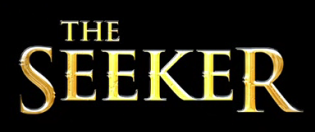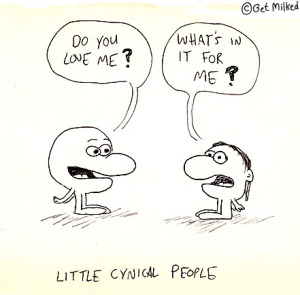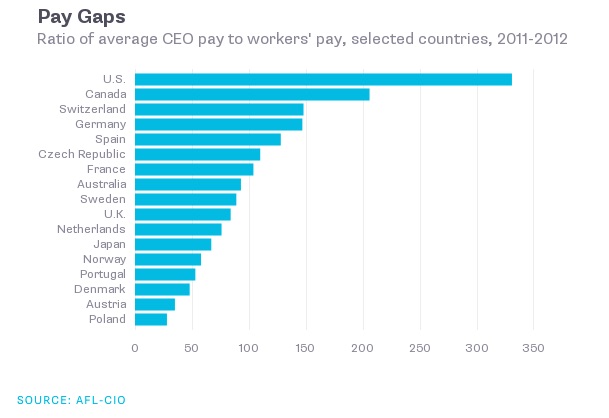 Many years ago1 I was introduced to a wonderful little book – a satirical novel called ‘Flatland: A romance of many dimensions’.
Many years ago1 I was introduced to a wonderful little book – a satirical novel called ‘Flatland: A romance of many dimensions’.
It was published way way back in 1884 by an English schoolmaster, Edwin A. Abbott, and sits within the rather specialist genre of ‘mathematical fiction’. The book explores the nature of dimensionality.
By chance, after various books, experiences, thoughts and conversations, Flatland came back into my mind as a metaphor for explaining something seemingly far removed. I realise that, for regular readers of this blog, you may be struggling to find the link…so here goes my explanation:
Explaining Flatland
Abbott describes, in wonderful detail, a society that exists on a 2-dimensional plane (hence its name of Flatland).
Imagine a vast sheet of paper representing Flatland, with the ‘people’ that live there only existing two dimensionally ‘on’ the page. They can move freely about their world – that being forwards, backwards, left and right…but they can’t move up or down. Put more accurately there is no such thing as up or down…at least not to them.
The people
Flatland is populated by a society of people that vary in (2-dimensional) shape: from triangles, squares and upwards through ever-increasing polygons, all the way to (almost) circles.
There is a strict hierarchy2 – a class system according to a person’s shape – and a way of ascending it3.
|
Class |
Shape |
Societal roles |
|
Lowest |
Isosceles (irregular) triangles |
Soldiers and Workers |
|
Equilateral (regular) triangles |
Middle class |
|
|
Squares |
Professionals |
|
|
Pentagons |
Gentlemen |
|
|
Hexagons |
Beginnings of Nobility |
|
|
…(increasing sided Polygons) |
…higher degrees of Nobility |
|
|
Highest |
(almost) Circles4 |
Priests |
Here’s an extract to show the delightful effort that Abbott took to explain Flatland to a 3-dimensional being (like you and me):
“Place a penny on the middle of one of your tables in Space; and, leaning over it, look down upon it. It will appear a circle.
But now, drawing back to the edge of the table, gradually lower your eye (thus bringing yourself more and more into the conditions of the inhabitants of Flatland), and you will find the penny becoming more and more oval to your view; and at last when you have placed your eye exactly on the edge of the table (so that you are, as it were, actually a Flatlander) the penny will have ceased to appear oval at all, and will become, so far as you can see, a straight line.”
He goes on to explain that:
“If [a Flatlander] comes closer to another, he sees his line become larger; If he leaves us, it becomes smaller; but still, he looks like a straight line.”
Abbott explains how the shapes (people) move around and ‘see’ each other. He makes clear that it’s rather hard to work out the nature of the person coming towards you, and so Flatlanders have evolved various social conventions around:
“discriminating by the sense of touch, between the angles [of each shape]”.
Coming into contact with a triangle is rather a sharp (and risky) experience, whilst touching a hexagon is less so5.
There are then pages and pages of highly descriptive detail about the laws and culture of Flatland…which I will skip…to get to:
Our hero the Square, and his household
The story is based around our (hopeful) hero, a humble Square, and his household. He’s an unassuming stalwart of his community, with a desire to uphold the traditions and culture of Flatland.
Here’s an excellent reproduction of Abbott’s original drawing of the Square’s household at night-time whilst most of the inhabitants are asleep in their rooms. It is drawn from the (seemingly non-existent) perspective of ‘above’:
Notice that:
- the directional N-S-E-W arrows shows (as a diagrammatic key) the four directions that a Flatlander can move (an X and Y axes, but no Z)
- Flatland houses are Pentagon shaped
- the doors into the house and the rooms within are merely 2-dimensional gaps
- the ‘workers’ (from the Policemen outside to the Butler within) are irregular triangles; and
- the sons and grandsons (in their rooms) are pentagons and hexagons respectively (showing how they have been born into successively higher classes).
Right, so that’s the set up to the main event…
The Sphere that came to visit
Now, unbeknown to the Square, it turns out that 2-dimensional Flatland sits within 3-dimensional ‘Spaceland’…and an inhabitant of this Spaceland, a Sphere, was looking at the Square’s house from afar.
The Sphere chose to visit the Square in his house and, because he could, he came in from (the seemingly impossible) ‘above’. To be clear, he didn’t come in through the door, he simply ‘appeared’ in the Hall.
This caused quite a shock to the Square. Where had this uninvited stranger come from? and who/what was he? On using the power of touch, the square found that he was in the presence of a perfect Circle6 and recoiled in horror.
The Square: “Can it be that I have misbehaved to [i.e. touched] a perfect circle?”
The Sphere: “I am indeed, in a certain sense, a circle…and a more perfect circle than any in Flatland; but to speak more accurately, I am many circles in one.”
There is then a long conversation between the two, with the Square utterly confused as to what is before him, and the Sphere trying, in vain, to rationally explain that he is, in fact a 3-dimensional person from Space.
The conversation reaches a rationale impasse…and so the Square asks for some sort of proof of this mysterious ‘height’ thing (i.e. ‘above’ and ‘below’).
The Sphere (to himself): How shall I convince him? Surely a plain statement of facts followed by an ocular demonstration ought to suffice.
The Sphere proceeds as follows:
“Your country of 2-dimensions is not spacious enough to represent me, a being of 3, but can only exhibit a slice or section of me, which is what you call a circle…but now prepare to receive proof positive of the truth of my assertions…
…you cannot see more than one of my sections, or circles, at a time; for you have no power to raise your eye out of the plane of Flatland; but you can at least see that, as I rise in Space, so my sections become smaller. See now, I will rise; and the effect upon your eye will be that my circle will become smaller and smaller till it dwindles to a point and finally vanishes.”
The following diagram shows a) what the Sphere was demonstrating and b) what the Square, on his plane (‘My eye’), could see.
The Square: There was no ‘rising’ that I could see; but he diminished and finally vanished. I blinked to make sure that I wasn’t dreaming. But it was no dream.
The Sphere (a voice now seemingly coming from nowhere): “Am I quite gone? Are you convinced now? Well, now I will gradualy return to Flatland and you shall see my section become larger and larger.”
The Square: Although I saw the facts before me, the causes were as dark as ever. All that I could comprehend was, that the Circle had made himself smaller and vanished, and that he had now reappeared and was rapidly making himself much larger.
When he regained his orginal size, he heaved a deep sigh; for he perceived by my silence that I had altogether failed to comprehend him.
And, indeed, I was now inclined to believe that he must be no Circle at all, but…some Magician.
There is a fair bit more discusion and debate between them until the Sphere becomes exhasperated…
Experiencing Spaceland
The Sphere: “Why will you refuse to listen to my reason?…
I have it! Deeds, and not words, shall proclaim truth…out of your plane you go!”
The Square: An unspeakable horror seized me. There was a darkness; then a dizzy, sickening sensation of sight that was not like seeing; I saw a Line that was no Line; Space that was not Space; I was myself and not myself. When I could find voice, I shrieked aloud in agony, “Either this is madness, or it is Hell.”
The Sphere: “It is neither. It is knowledge; it is 3-dimensions: open your eyes once again and try to look steadily.”
The Sphere succeeds in pulling the Square out of Flatland and into Spaceland. The Square is utterly amazed as he looks down on to his house from this new ‘above’!
He goes on to be “awestruck at the sight of the mysteries of the earth, thus unveiled before my unworthy eyes.”
(Where) does it end?
There’s an interesting twist in the tale: When the Square is being shown around the wonders of Spaceland, he eventually asks the Sphere a challenging question…
The Square: “My Lord [referring to the Sphere], your own wisdom has taught me to aspire to one even more great, more beautiful, and more closely approximate to Perfection than yourself.
As you yourself, superior to all Flatland forms, combine many circles into one, so doubtless there is One above you who combines many spheres into one…, surpassing even the solids of Spaceland.
And, even as we who are now in Space, look down on Flatland and see the inside of all things, so of a certainty there is yet above us some higher, purer region [e.g. a 4th dimension].”
This gets the Sphere into an angry debate with the Square:
The Sphere: “There is no such land. The very idea of it is utterly inconceivable.”
The ensuing rage of the Sphere from the ‘insult’ that there must be ‘something above him’ causes him to throw the impertinent Square back into Flatland.
Explaining Spaceland to others!
As you might imagine, once the Square is (ahem) ‘returned’ by the Sphere back into his home of Flatland, he is desperate to impart this amazing, wondrous, new 3-dimensional wisdom to his fellow countrymen – first to his family and then onwards to the authorities.
However, no matter how hard he tries, every attempt falls on deaf ears:
“My knowledge cannot be made intelligible to a single one of my country men; and I am mocked at – the possessor of the truths of Space and the theory of [3 dimensions] – as if I were the maddest of the mad.”
He ends up locked away in prison by the High Priests of Flatland.
An analogy: ‘Control Land’ and ‘Learning Land’
Wow, that was a full-on explanation of Flatland. I hope that you stayed with me…and that it got you thinking in some of the directions that I will now (with some poetic licence) go…
Many an organisation lives in ‘Control Land’7 which has a defined way of being, and a certainty about itself.
‘Control Land’ involves things like:
- future state goal-oriented strategic plans
- transformation programmes (and projects) of change
- cascaded objectives and their measurement (a la OKR’s)
- ‘design blueprints’ to be copied and implemented
- financial engineering (via ‘fixed performance contracts’ a.k.a. budgets),
- numerical targets, fixed position descriptions and performance management.
…and, to those who have operated in this conventional way for all of their working lives, it all seems so obvious!
Now, a metaphorical Sphere could ‘appear’ and attempt to rationally explain to a Control Lander why it’s not such a great way to be…but this would likely leave a highly bemused Square, seeing the Sphere as either a Magician or a Fool8.
For any well-meaning Square to ‘get it’, they likely need to be physically taken out of Control land on an adventure up into…
‘Learning Land’ in which you:
- (habitually) ‘go to the Gemba’ and study the reality of the system from the point of view of its customers (objectively – outside the system boundary looking in – rather than being subject to it)
- discover what constraints are in place causing it to perform as it does
- work out what thinking needs to change to (meaningfully and sustainably) alter these constraints
- (systemically) experiment with new thinking and new ways of working; and thus
- transform the organisational paradigm (not just attempt ‘process improvement’).
…where this would create a resilient purpose-seeking organisation.
Linkage with presumptions of Order vs. the Complex reality.
Much of the apparatus of ‘Control land’ assumes (desires) an ordered domain, with implausible certainty as to what will and won’t happen in the future and how people will act and interact. This supposed control is an illusion.
- It leads to fear. Fear of not achieving what has been predetermined (a target, an objective, a budget, a plan, a deadline). Fear of being judged, of not looking good. Fear of (supposed) failure
‘Learning land’ needs to be predicated on variety, on uncertainty, on agency, on emergence…on humans, not widgets – a complex reality.
- There isn’t (doesn’t have to be) any ‘failure’ from finding out that what you thought would happen didn’t. In fact, quite the reverse. If you critically reflect, you will have succeeded...in learning.
Summarising the Square’s journey to a higher level of understanding:
- explanations won’t do it (though it might create curiosity in some)
- there will be tension along the way (with points of frustration and discomfort – how could there not be?)
- those involved are unlikely to be able to ‘unsee what they have seen’ (they have seen something that has amazed, and changed, them)
- they won’t be able to return and merely ‘tell the rest’ (they will be put into a metaphorical prison if they do)
- if Learning land is found, then thought is required on how to stay fully connected to (and not ridicule) those who currently reside in Control land, and how to grow (NOT push) the new…so that they wish to ‘cross the Rubicon’.
- Important: ‘Learning Land’ is not a destination (an answer, a solution). There will always be more. Every Sphere [beware of any Guru] is merely a Square to a higher (and potentially ‘yet to be discovered’) dimension. If anyone insists that they have ‘the answer’, work to move on past them.
Footnotes
1. Whilst I was studying Mathematics at University back at the beginning of the 1990s.
2. A (misogynistic) book of its time: I have left out the details of (the Victorian era) Abbott setting women at the bottom of the hierarchy (as having no shape at all, merely being ‘sharp’ straight lines) but I reference it for completeness.
3. Class ascendance and control: Abbott goes into detail about how, with the right conditions, a (male) child may be born with ‘one more side’ than his father and thus rise one step up the class system…and how rebellion by the lower classes is brutally stamped out!
4. (Almost) Circles: Abbott reserves a perfect circle for a God figure.
5. Touch:…though it is culturally unacceptable to touch higher nobility and the priesthood.
6. A true circle would represent a god figure and touching him was the rudest thing one could do.
7. On naming it Control Land: I’ve called it ‘Control land’ because that is what the nobility and priesthood within think is being achieved. However, those looking in from, say, ‘Learning land’ would likely refer to it as ‘Attempted Control Land’ because they can see that the supposed control is an illusion.
8. Sphere or Fool: Of course, they might be a fool, so rather than wasting time on explaining and debating, let’s just go and take a look…and go from there.
9. Flatland – The Movie: I sent my draft post around to a few colleagues to review (as I usually do) and one of them (thanks Sarah) pointed out that Flatland was made into a short cartoon movie back in 2007. I had no idea! I’ve looked it up and, whilst the movie script fits with the gist of the original book, it has been Hollywood-ised to a certain degree, particularly with the addition of the obligatory happy ending.


 To seek: search for, attempt to find something.
To seek: search for, attempt to find something. “Management thinking affects business performance just as an engine affects the performance of an aircraft. Internal combustion and jet propulsion are two technologies for converting fuel into power to drive an aircraft.
“Management thinking affects business performance just as an engine affects the performance of an aircraft. Internal combustion and jet propulsion are two technologies for converting fuel into power to drive an aircraft.  You will tell your manager what you think he/she wants to hear, and provide
You will tell your manager what you think he/she wants to hear, and provide  If you are a systems thinking
If you are a systems thinking  Okay, you cynic….but are you?
Okay, you cynic….but are you? Erm, I’ll have to think about that one…
Erm, I’ll have to think about that one… Let me critique that label for a moment…
Let me critique that label for a moment… 4. “Passionate: Having, showing, or caused by strong feelings or beliefs”
4. “Passionate: Having, showing, or caused by strong feelings or beliefs” Oh yes, once my colleague and I thought we had finished our ‘labelling’ journey, we realised that nothing had actually changed. And so we turn to:
Oh yes, once my colleague and I thought we had finished our ‘labelling’ journey, we realised that nothing had actually changed. And so we turn to:
 Warning (or advert for some): Sometimes I write long(er) ‘foundational’ type posts – this is one of them 🙂
Warning (or advert for some): Sometimes I write long(er) ‘foundational’ type posts – this is one of them 🙂 A deterministic system is one which has no purpose and neither do its component parts. This might seem rather strange…”Erm, I thought you said a system had to have an aim?!” – the point is that a deterministic system normally serves a purpose of an entity external to it, such as its creator. Its function, and that of its parts, is simply to provide that service when required.
A deterministic system is one which has no purpose and neither do its component parts. This might seem rather strange…”Erm, I thought you said a system had to have an aim?!” – the point is that a deterministic system normally serves a purpose of an entity external to it, such as its creator. Its function, and that of its parts, is simply to provide that service when required. An animated system is one which does have a purpose of its own but its parts don’t.
An animated system is one which does have a purpose of its own but its parts don’t. A social system is one which has a purpose of its own and so do its parts (the people within).
A social system is one which has a purpose of its own and so do its parts (the people within). Here’s something that I’ve noticed over the years: ‘Command and control’ managers really don’t like being referred to as….well…’command and control’ managers.
Here’s something that I’ve noticed over the years: ‘Command and control’ managers really don’t like being referred to as….well…’command and control’ managers.
 So, I’ve always intensely disliked the ‘budget’ thing. Not the basic idea of thinking ahead, about what might happen, and attempting to do sensible things to cope with this – don’t worry, I’m not about to advocate ‘sticking your head in the sand’ – but the management belief that we can and should carry out a grand planning exercise (usually annually) in which we attempt to predict ‘what will be’ in great detail, and then watch for, and attempt to explain away, any and all deviations from it.
So, I’ve always intensely disliked the ‘budget’ thing. Not the basic idea of thinking ahead, about what might happen, and attempting to do sensible things to cope with this – don’t worry, I’m not about to advocate ‘sticking your head in the sand’ – but the management belief that we can and should carry out a grand planning exercise (usually annually) in which we attempt to predict ‘what will be’ in great detail, and then watch for, and attempt to explain away, any and all deviations from it. So I’ve written a few posts to date about
So I’ve written a few posts to date about 


